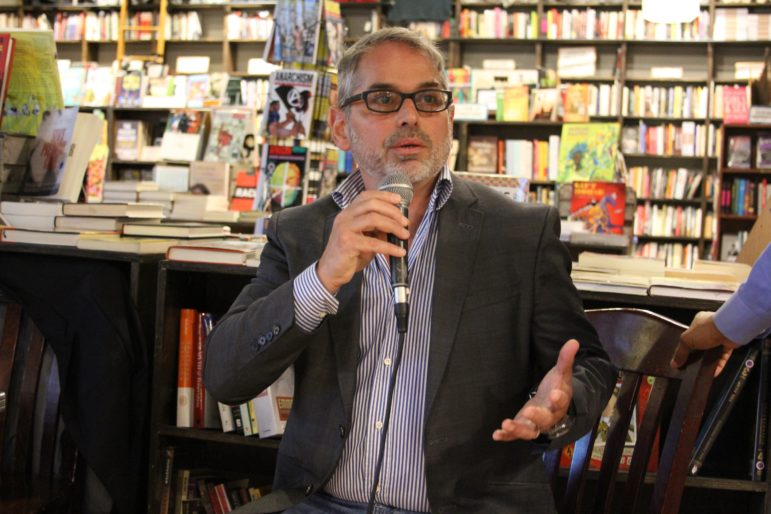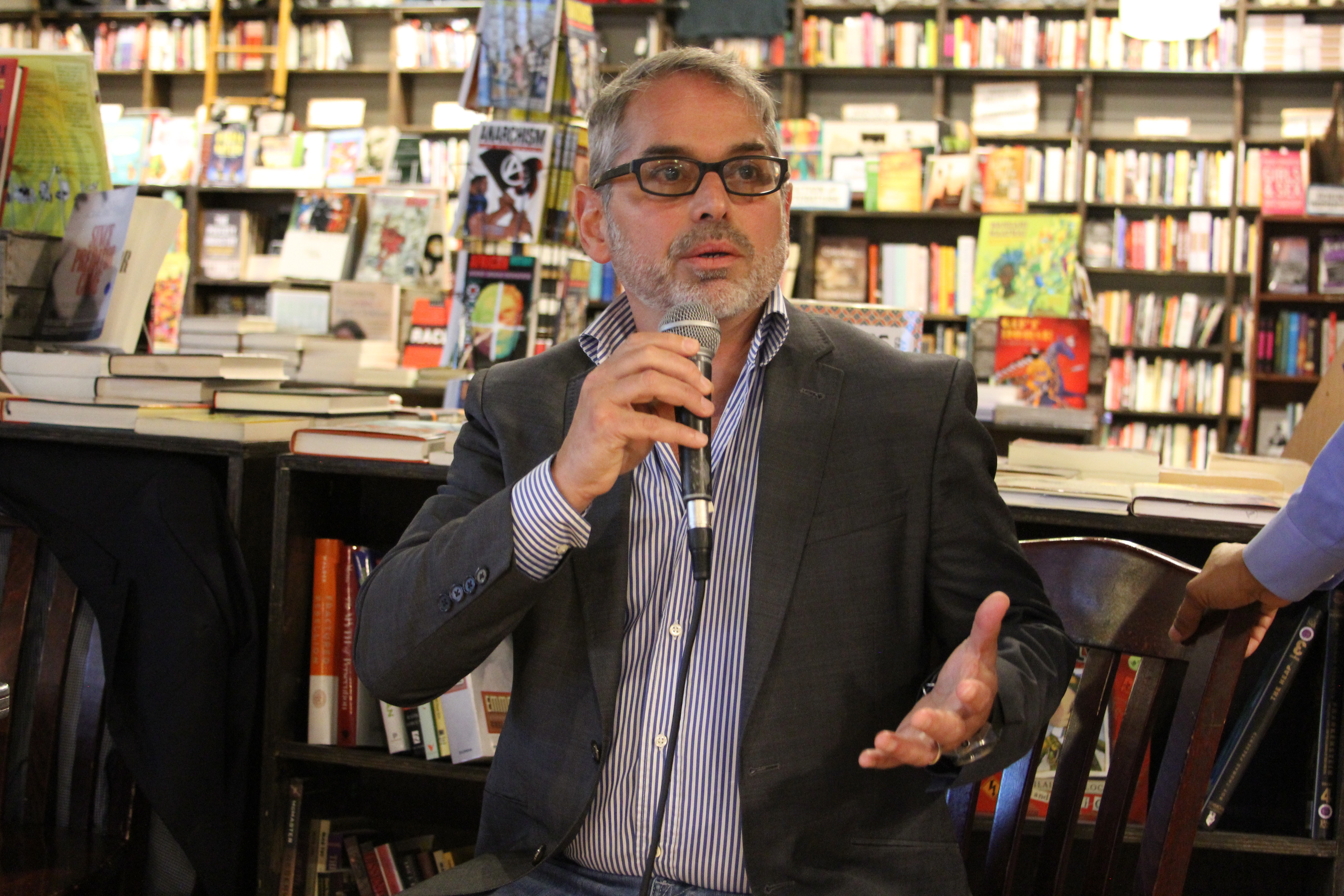
Photos by Sarah Barr
Evan Elkin
BALTIMORE — Adolescents with substance abuse problems too often cannot access treatment unless they land in the juvenile justice system, experts say.
The juvenile justice system has developed some effective interventions for adolescents dealing with substance abuse, but they would be better served accessing treatment outside the system, said Evan Elkin, national executive director of Reclaiming Futures.
“We have to move these evidence-based treatments and approaches out of the justice system and back into the community,” he said Wednesday at a panel discussion hosted by the Open Society Institute-Baltimore.
Relying on the justice system to treat substance abuse also means treatment is rooted in racial divisions, Elkin said. Youth of color are disproportionately represented in the juvenile justice system.
“We operate two public health systems in America. One is for people of color and one is for the white population. Public health is mediated through the justice system,” he said.
[Related: Obama Affirms at Drug Summit That Addiction Is Disease, Not Moral Failure]
Hoover Adger, director of the Substance Abuse Assessment/Intervention Team at the Johns Hopkins Hospital Adolescent Program, said he sees a greater awareness of the science behind addiction, for adolescents and adults.

Hoover Adger
But youth do not often have a voice in the political conversations that dictate whether treatment is offered or whether it’s accessible. Communities have to work on behalf of young people, he said.
“We need you to hang in there and speak loudly,” he said.
What works
Treatment programs should not take a punitive approach, Elkin said. Teenagers shouldn’t wear a label of addiction but instead be able to consider their strengths and what they want for themselves, he said.
“The idea is to plant a seed to trust them as decision makers,” he said.
Treatment also cannot end too soon, Adger said. No doctor would offer a diabetes patient insulin for only a few weeks, then call the patient a failure when they got sick again.
The science shows addiction treatment can work as well as medical interventions for other chronic conditions, but protocols don’t always reflect that, he said.
“There tends to be a disconnect between the science and what we actually do,” he said.
Treatment also should consider the role of a whole family, not just the person dealing with addiction, said Carin Callan Miller, founder of Save Our Children Peer Family Support Group.
“When families come together and they find a safe place to share without shame, they can learn and heal,” she said.
Elkin said after the panel that he does see a shift toward community-based treatment options, such as use of the Screening, Brief Intervention, and Referral to Treatment model to identify and refer substance abuse problems. As more programs are built up, communities will be in better position to help youth.
“If you have options, it changes your ability to make decisions,” he said.
More related articles:
Mothers & Fathers; Sons & Daughters
How to Talk to Kids about Drugs — and How Not to
































